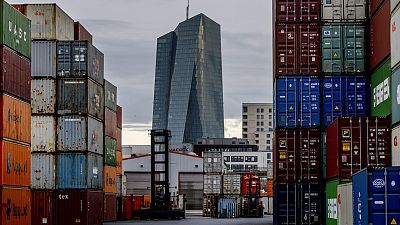By Olzhas Auyezov and Mariya Gordeyeva
ALMATY (Reuters) - The Kazakh authorities are urgently looking for a bank to take over no. 2 lender Tsesnabank as they believe it needs new financing to prevent a collapse, three sources familiar with the discussions told Reuters.
Officials from the government and central bank have approached at least three other Kazakh banks and hope to tie up a deal in February, the sources said. They are offering financial incentives for any bank prepared to take it over.
The authorities want to avoid liquidating the bank, which has over $1 billion in retail deposits and received a $1.8 billion state bailout in September, because of the impact on the wider economy, the sources said.
They want to move quickly to prevent a run on deposits. Also, some analysts say a presidential election could be called in the spring. A spokesman for the election commission could not be reached for comment. President Nursultan Nazarbayez would almost certainly be reelected but the authorities would be keen to tie up a takeover before any poll.
The state-owned "bad bank" said on Friday it planned to buy some of Tsesnabank's assets. One of the sources said this was part of the plan to make the troubled bank more attractive to another bank.
"The scheme is simple – an investor puts his own money into the bank and the state helps them clean up its loan book," one of the sources said.
Spokesmen for the central bank, the government, Tsesnabank, and its main shareholder, former Nazarbayev chief of staff Adilbek Zhaksybekov, did not reply to requests for comment.
The "bad bank", the Non-Performing Loan Fund (NPLF), said in a bourse announcement on Friday it planned to sell 604 billion tenge in domestic bonds next week in order to finance asset purchases from Tsesnabank.
The approach raises more questions about the health of the oil exporter's banking system after Nazarbayev declared in April that bailouts worth nearly $10 billion for several banks in 2017 would be the last.
Tsesnabank's September bailout came in spite of that promise. The authorities said it was a move to support indebted farmers, who are clients of the bank, and would help an otherwise healthy bank bridge a short-term liquidity gap.
BAD LOANS
But some bankers told Reuters that Tsesnabank's financial reports indicate that it is in distress due to bad loans.
The authorities have also now decided that the balance sheet is so unhealthy that it would be easier for another bank to take it over than to liquidate or bail it out, the sources say.
Chief executive Ulf Wokurka said the balance sheet problems were to do with "worsening asset quality". His deputy, Dmitry Li, said in a written reply to Reuters queries that it reflected "seasonal cash flows of borrowers in the agricultural sector".
The banking sector was hit hard by a fall in oil prices and subsequent tenge devaluation in 2015 because many banks lent in dollars. Customers then found it hard to repay the debts.
More than half of Tsesnabank's loan book was denominated in foreign currency, mostly dollars, at the end of 2017.
Although oil prices have recovered, economic growth has slowed and some non-oil sectors are in crisis, such as farming where several large companies have defaulted on their debt.
The central bank also says some banks have been poorly managed and large bailouts have already drained billions of dollars from state coffers.
The IMF said in December "the recent additional financial support for Tsesnabank raises concerns".
It said state support was justified only for "systemic, viable banks." The only bank considered by economists to be of systemic importance to the financial system in Kazakhstan is Halyk which is five times larger than Tsesnabank and accounts for a third of total banking sector assets.
Nevertheless, economists said a collapse of Tsesnabank could be a headache for the authorities if they were forced to compensate the large number of depositors from the deposit insurance fund.
DISTRESS
Tsesnabank showed first signs of distress when it reported a sharp liquidity drop in the second quarter last year. In September, the central bank provided a 150 billion tenge (301.99 million pounds) liquidity support loan, later increased to 200 billion tenge.
Shortly afterwards, the central bank and the government said Tsesnabank would sell agricultural loans worth 450 billion tenge to the NPLF. The loans, a quarter of Tsesnabank's overall loan book, were sold at face value so it did not book a loss, the bank said.
While the bank reported either growing or stable total interest income in its income statements for 2016, 2017 and 2018, interest income in its cash flow report was declining, according to the publicly available accounts.
The discrepancy means that Tsesnabank either extended long-term loans that were not expected to generate cash flow for some time or booked interest income from loans even though that interest had not been paid by the borrower, bankers say.
The gap between Tsesnabank's accrued and received interest income grew from 12 percent in 2015 to 36 percent in the first half of 2018, the accounts show.
The central bank told Reuters in an email in November that "generally, a declining ratio of received interest to accrued interest is being observed at certain banks, which is linked to the worsening financial situation of borrowers whose loans are denominated in foreign currency".
(Editing by Anna Willard)



